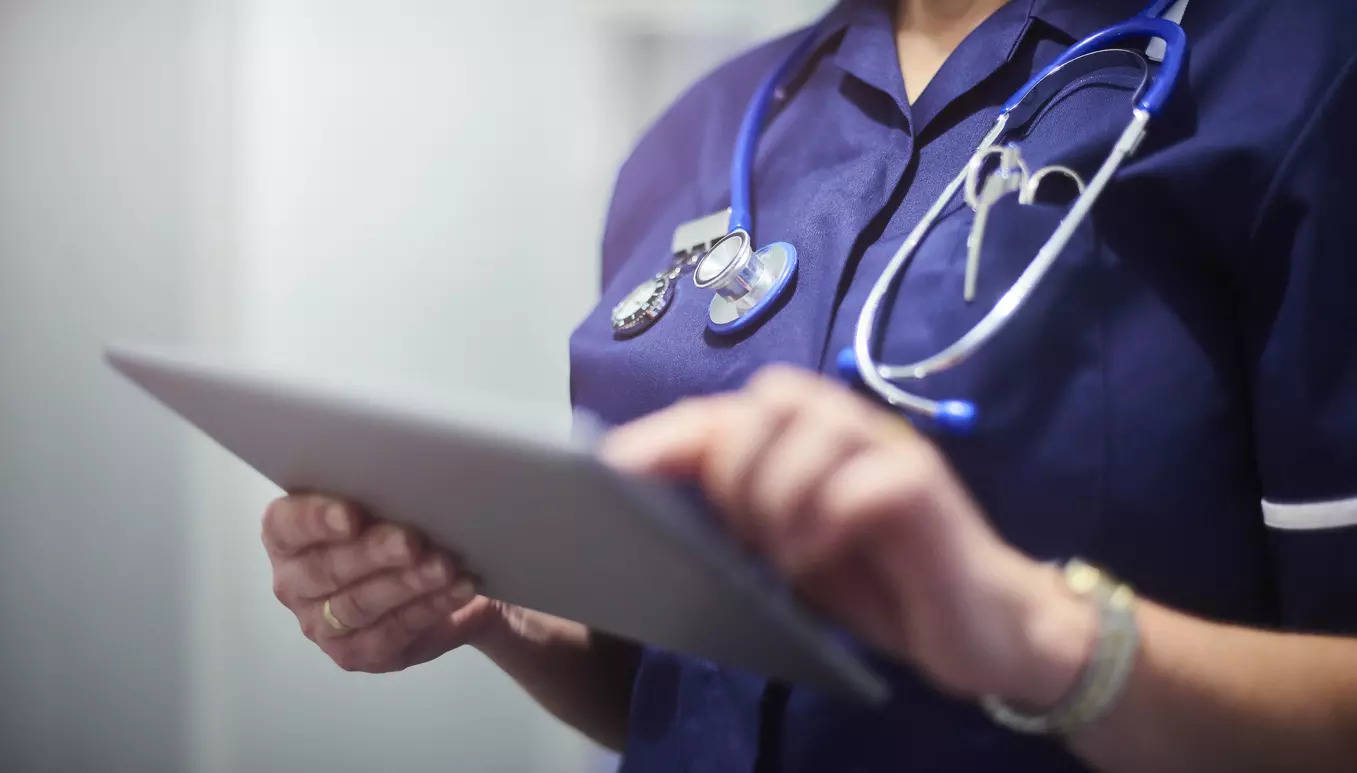Hormones play a big role in our day-to-day health, and this is particularly relevant for women’s health, whether in relation to contraception, fertility, menstrual or endocrine problems, or menopause.
However, hormone levels are rarely measured by healthcare professionals and accessing data about hormone levels to make decisions about their health can be frustratingly difficult for many people. Marina Pavlovic Rivas, CEO and co-founder of Montreal-based startup Eli Health experienced this herself and as a result, was inspired to set up her company in 2019.

Eli Health is developing at-home hormone testing that can be done for an affordable price using only saliva, a test stick, and a smart phone. The company plans to launch its first two tests this year, for progesterone and cortisol, with others in the pipeline.
Rivas talked to Inside Precision Medicine senior editor Helen Albert about why women’s health needs to be more of a priority; why democratizing access to fast, cheap, and easy hormone testing is important; and about navigating the potentially challenging world of at-home testing and diagnostics.
Q: What inspired you to start a women’s health tech company?
Marina Pavlovic Rivas: I started the company initially out of a personal need, when I was looking for data to make decisions around my health. I was looking for a different contraception method that was hormone-free and non-invasive, but still effective. By looking at the options on the market, I saw that there were not that many that fit within those categories.
My partner and I came across hormone monitoring. Different studies pointed to the fact that by measuring hormones you can much more precisely assess when your fertile window is to have an effective form of contraception.
By speaking with hundreds of women, physicians, and researchers, we quickly saw that the same dissatisfaction that a lot of women were experiencing around their contraception was also very common when it came to other areas of women’s health, like fertility, perimenopause, and endocrine conditions. We realized that having a way to measure hormones frequently over a long period of time and at a low cost would solve many other unmet needs, across all life stages.
Q: What was it like to enter the medical testing field?
Rivas: Before starting Eli, I founded another company in the field of machine learning [Gradiant AI] to develop solutions that enabled organizations to leverage data. So, from a personal perspective, using data to be able to make better decisions has been a common thread.

The process has been really about teamwork, because the product we’re building is very multidisciplinary, there is a piece that touches data science. But there’s a piece around the hardware of the microfluidics, the chemistry of the test, and integrating all of that together. From the start, my co-founder and I had a very complementary background. His background is in hardware physics and he has developed sensors in the past. Very quickly we needed to expand the team to include different expertise around the chemistry side and the medical side and to be able to ultimately develop the product, which is composed of more than a dozen inventions across different fields.
Q: What has the experience of founding a company with your life partner been like?
Rivas: For us we always say that it’s one of our biggest advantages. The journey of starting a company, developing something that has never been developed before, is full of challenges and entrepreneurship can be a lonely journey. When you’re in this with a partner that you know you can count on and with whom you share similar values, it makes a difference. I believe that the things we were able to achieve are in a large portion due to this strong relationship that we have together.
I know a lot of entrepreneurs who asked me “How is it to work with your life partner?” I then ask the question, “How is it to work with someone who’s not your life partner, and what’s the impact on your personal relationship?” I see that very often that seems to cause challenges, because it can be such an intense journey. I think being fully aligned in what we are doing helps us a lot.
Q: Can you tell me a bit more about the tests you are developing?
Rivas: Initially we planned to produce a reader. But we’ve now developed a technology on the software side that enabled us to replace a test reader with a smartphone camera. So product-wise, when we launch on the market later this year, it will be a test with a mobile app to read that test.
You put the test on your tongue for 30 seconds and when it develops you see two lines. It’s not like a pregnancy test or a COVID test where there’s one line or two. Here, we’re looking at the intensity of the color. Based on that intensity, we’re able to tell the hormone levels using our software and app. The app will tell you if you’re within range, above range, or below.
Right now, we are soon to launch tests for two hormones, progesterone and cortisol, but our vision is to have a wide range of tests that go beyond reproductive hormones. Estrogen is already in the pipeline and almost completed. We have other ones in the pipeline like testosterone, luteinizing hormone, and follicle-stimulating hormone.
It was important for us to have cortisol as one of the first hormones that we’re launching, as cortisol touches many areas of physical health and mental health. When we think for example of fertility, cortisol levels that are around 20% higher than baseline can prevent ovulation and prevent conception. When it comes to perimenopause, having higher- or lower-than-normal cortisol levels can amplify the frequency or intensity of symptoms.
Q: Why is the “at home” part of the testing important?
Rivas: If you want to test your cortisol levels today you need to go to the doctor’s office, get a requisition, probably do a blood test. Sometimes it’s a saliva test, as well. Then you wait another couple of days, sometimes a couple of weeks before getting your results and very often it goes directly to the physician’s office.
“What we’re bringing with this test is the possibility to collect those data points at a low cost, each one has a cost equivalent of $3, and almost in real time. It’s not only offering something that is faster and cheaper, but really opening up different possibilities.”
In the U.S., it is possible to order hormone tests directly at home. Those tests come in the form of a sample collection kit, where you collect a sample of blood or urine, sometimes saliva, but then you need to ship it back to the lab. So, although it does make it more accessible, it’s still expensive. Each data point can cost $100–200 and it takes between one week and two weeks before receiving the results.
What we’re bringing with this test is the possibility to collect those data points at a low cost, each one has a cost equivalent of $3, and almost in real time. It’s not only offering something that is faster and cheaper, but really opening up different possibilities. For example, a decade ago, to measure heart rate, we needed to be at the pharmacy or the doctor’s office with a machine that would take that reading. But now we have it on our wrists, with smartwatches, or smart rings, at all times. People make decisions on a daily basis based on that data and that’s what we envision for hormones. It’s a similar shift. We want to provide that data continuously, so that people are able to use it as a biomarker to guide different decisions every day.

Q: How accurate are your tests?
Rivas: We have done a comparison study with our test and an ELISA test, saliva compared to saliva, which showed 85–90% correlation for cortisol and progesterone. Before that, we also did a research partnership with McGill University to do a systematic review on all the research that exists that relates to the correlation between saliva and blood, and there’s robust research showing a strong correlation between the two.
Q: What differentiates you from your competitors?
Rivas: When we developed the product, we had two benchmarks. For the cost, we wanted something that was as affordable as a coffee. For the ease of use, we wanted to have something that was as easy as brushing your teeth. We use those two analogies, because for us, the vision was to have something easy enough and affordable enough that it can be implemented in someone’s daily routine.
We planned to have a product that could be profitable from the test itself. For us, that was important, because when we look at other companies in the at-home testing space, if they have a product that is not profitable with the initial offering, that’s when the need for additional offerings in the background comes in. For example, monetizing the data and so on. That can be problematic from either a user perspective or simply a business model perspective and it’s not fully scalable.
We started the company five years ago and within that time more and more companies have been launched in hormonal health. Most of the companies are making existing tests more accessible or adding a layer of interpretation around the existing tests. This is extremely valuable, but still leaves a lot of the unmet needs unaddressed. To address those unmet needs, I believe that there’s a lot of innovation that needs to be developed.
Q: My understanding is that there’s not enough research completed on the effects of hormones on women’s health. Do you think that is getting better?
Rivas: Sometimes the research is there, but just hasn’t reached practice, and in a lot of cases the research is still emerging. There’s a big data gap when it comes to women’s health and hormonal health. In some cases, for example, when it touches perimenopause and menopause, there’s enough research to provide proper care and it’s more a challenge of having that research and education adopted within the medical community.
In other cases, such as with our technology, there’s strong research around the impacts of hormones and hormone imbalances when it comes to women’s health. But there’s also some data gaps because it hasn’t been part of the practice to have data points that are as frequent as our technology allows. We need to start by leveraging the existing research to deliver the value, but there’s also many other opportunities that will be created based on the dataset that we’re creating for the first time. Our vision is to start with low-risk use cases and to leverage that existing research, but also to make partnerships with the medical and research community to be able to leverage that data in a way that can fill a lot of the knowledge gap.
For our users, we want to implement the possibility to opt in or opt out of research in a way that will be fully anonymized. When people opt in, they will have visibility on what data will be shared, in what format, and how it will be used, but will also be able to delete that data when they want to.
Q: The home testing space can be challenging. What impact have events like the Theranos scandal and COVID pandemic had on your company development?
Rivas: From the moment we started, even in our first year of existence, we already built partnerships with the medical and the academic communities and had the approach of generating data at each step of development in a way that is very transparent. We also have our labs in Montreal, which we open up to interested parties on request.
Of course, right now, the tests are not on the market. But once they are, anyone has the possibility to correlate those results with other sources. With that approach of being not only open but creating partnerships that enable people to share the data, I think it has built a trust within the investment community, but also with various other partners.
We started the company just before the pandemic. But with COVID, at-home tests have become very normalized. Many people go to the pharmacy and buy a couple of tests, so they have them when they need them. That normalization has helped us a lot. When people see our test, a lot of people say, “Oh, it looks like a COVID test.” I think this, combined with other trends of having data to make decisions on a daily basis, has led to an acceleration in terms of the desire of people to have access to health data directly at home.

What have been your biggest management lessons or challenges so far since starting the company?
Rivas: The biggest lesson I have learned is to have patience. Initially, we thought the development was going to be quicker. Of course, as an entrepreneur, you’re always optimistic. But taking the time really to do those iterations and research and not skip any steps was one of the biggest learning experiences for us. Often with a startup, it’s about speed. Of course, it’s still important to move quickly as a startup in our space, but it’s even more important that the technology is robust and properly validated. We’re glad to have taken the time to build a product that is not only accurate, but also that brings ease of use and matches our vision.
We did evaluate another technological path that would have allowed higher accuracy but without the cost-effectiveness. We had to make some big decisions about whether we should still continue down that path, even if it would be too expensive for high-frequency, long-term testing. Ultimately, we decided to stick to the mission, even if it meant additional
development time. But taking that extra time was well worth it, because even if we’re five years further on we’ll still be the first company to launch a product like that on the market. It will also be a superior one than if we had launched it two years earlier but had sacrificed the cost-effectiveness or ease of use.
Helen Albert is senior editor at Inside Precision Medicine and a freelance science journalist. Prior to going freelance, she was editor-in-chief at Labiotech, an English-language, digital publication based in Berlin focusing on the European biotech industry. Before moving to Germany, she worked at a range of different science and health-focused publications in London. She was editor of The Biochemist magazine and blog, but also worked as a senior reporter at Springer Nature’s medwireNews for a number of years, as well as freelancing for various international publications. She has written for New Scientist, Chemistry World, Biodesigned, The BMJ, Forbes, Science Business, Cosmos magazine, and GEN. Helen has academic degrees in genetics and anthropology, and also spent some time early in her career working at the Sanger Institute in Cambridge before deciding to move into journalism.









